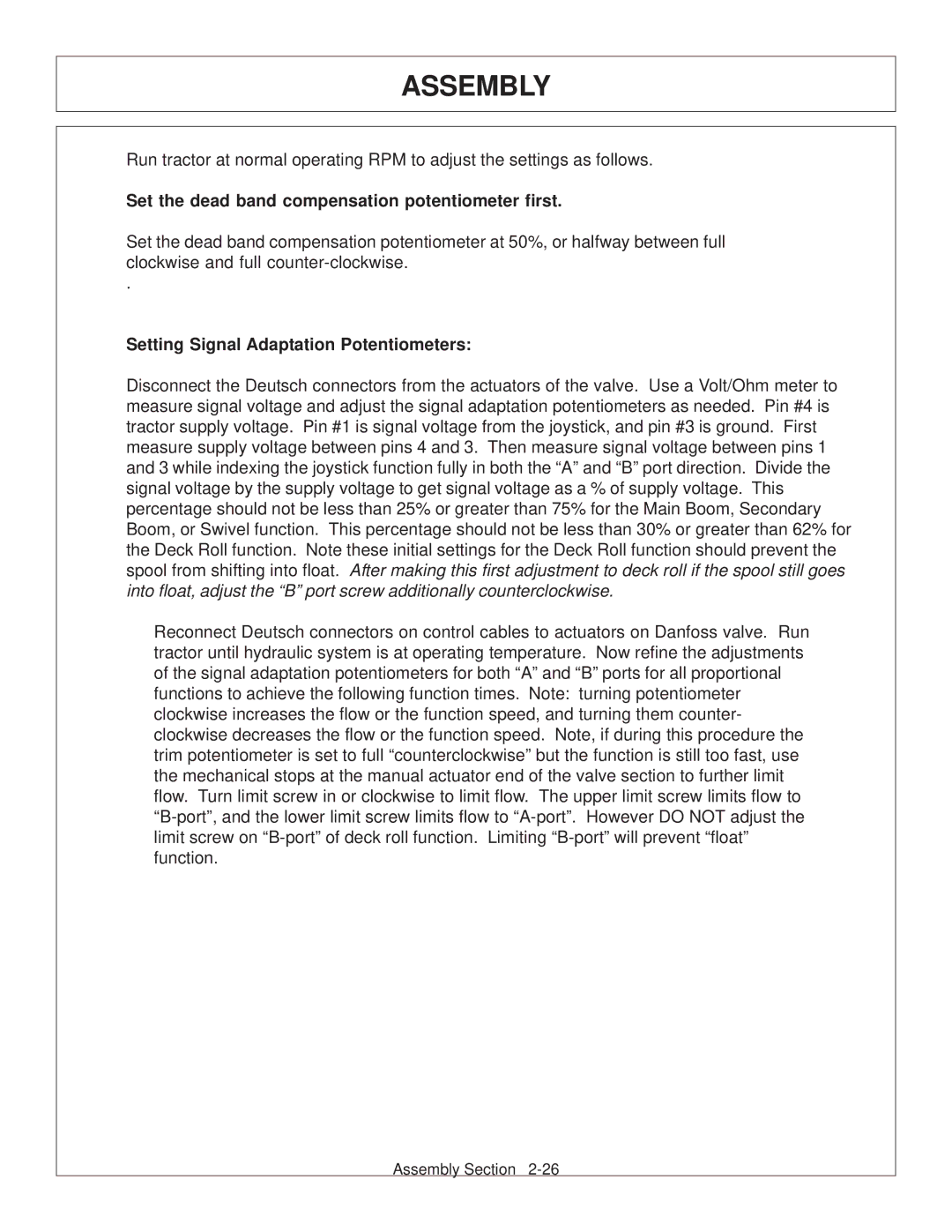JD 62-6420 specifications
The Tiger JD 62-6420 is a powerful and versatile machine designed to meet the demands of various agricultural applications. With its robust construction and advanced technology, this model stands out in the contemporary market of agricultural equipment. Built with a focus on performance and efficiency, the Tiger JD 62-6420 is an essential tool for farmers looking to enhance productivity and streamline their operations.One of the main features of the Tiger JD 62-6420 is its impressive engine. Equipped with a high-performance diesel engine, it provides exceptional horsepower, ensuring that the machine can tackle even the toughest field conditions. The engine is designed with fuel efficiency in mind, allowing operators to reduce operational costs while maintaining optimal power output. This balance of performance and efficiency is critical for agricultural tasks that require consistent and reliable power.
In terms of technology, the Tiger JD 62-6420 incorporates advanced digital controls that enhance the user experience. The intuitive interface allows operators to easily manage machine settings, monitor performance, and receive real-time data, optimizing daily operations. This technological integration not only improves efficiency but also helps in reducing the learning curve for new operators.
The tractor is also equipped with modern hydraulic systems that provide superior lifting capabilities, making it ideal for various attachments and implements. Whether it is plowing, cultivating, or hauling, the hydraulic system ensures smooth operation and the ability to perform multiple tasks effortlessly. This versatility is one of the defining characteristics of the Tiger JD 62-6420, allowing it to adapt to changing farming needs.
Durability is another critical aspect of the Tiger JD 62-6420. Built with high-quality materials, the tractor is designed to withstand the rigors of daily agricultural use. The chassis is engineered for stability and strength, enabling it to operate efficiently in uneven terrain. Its design prioritizes longevity, ensuring that farmers can depend on the Tiger JD 62-6420 for years to come without frequent maintenance issues.
Overall, the Tiger JD 62-6420 represents a blend of power, technology, and durability, making it a top choice for modern agricultural operations. With its innovative features and focus on performance, it stands as a testament to the advancements in agricultural machinery, enabling farmers to achieve greater productivity while minimizing their environmental footprint. Whether for small farms or larger agricultural enterprises, the Tiger JD 62-6420 delivers reliability and efficiency.

